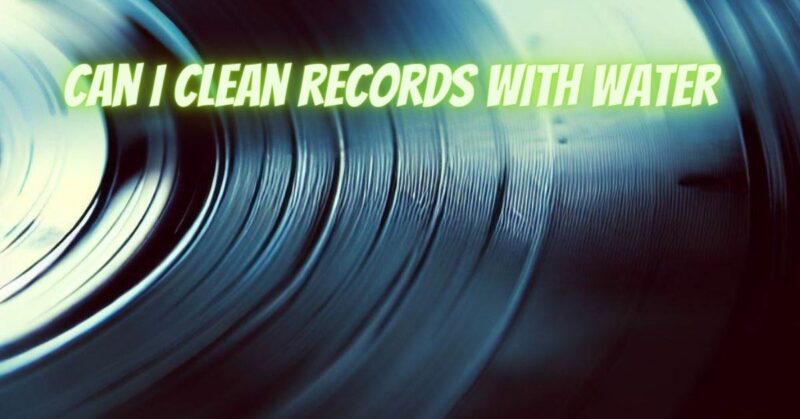Vinyl records, esteemed for their analog charm and immersive sound, require regular cleaning to maintain optimal playback quality. Among the methods considered for cleaning records, the use of water is a common approach that piques the curiosity of enthusiasts. In this article, we delve into the practice of cleaning vinyl records with water, its benefits, potential risks, and best practices to ensure effective and safe cleaning.
Understanding Water-Based Cleaning: Cleaning vinyl records with water involves using water as a cleaning agent to remove dust, dirt, and contaminants from the grooves. This method is rooted in the simplicity of water’s cleansing properties and its potential to provide a gentle yet effective cleaning solution.
Benefits of Water-Based Cleaning:
- Gentle Cleansing: Water is a natural solvent that can effectively dissolve and remove various contaminants without the use of harsh chemicals that might harm the vinyl or degrade sound quality.
- Cost-Effective: Water-based cleaning is economical, as water is readily available and doesn’t require the purchase of specialized cleaning solutions.
- Safe for Vinyl: When used correctly, water is generally safe for vinyl records, provided that the water is clean, free from impurities, and used in moderation.
Potential Risks and Considerations:
- Water Damage: Excessive moisture can lead to warping, label damage, or mold growth on records. Proper drying and moderation are key to avoiding these risks.
- Stylus Impact: Water can impact the performance of the stylus, affecting tracking and introducing noise. Ensuring proper drying and avoiding contact with the stylus during cleaning is essential.
- Label Protection: Care must be taken to prevent water from seeping into the record label, which could cause fading or peeling.
Best Practices for Water-Based Cleaning:
- Distilled Water: Use distilled or deionized water to ensure that no minerals or impurities are present that could harm the vinyl.
- Microfiber Cloth or Soft Brush: Gently apply water to the record’s surface using a clean, lint-free microfiber cloth or a soft brush. Avoid pouring water directly onto the record.
- Minimal Moisture: Use a sparing amount of water to avoid excessive moisture on the record. The goal is to dampen the surface without saturating it.
- Even Distribution: When using a cloth, ensure even distribution of water over the record’s surface to facilitate effective cleaning.
- Drying: After cleaning, allow the record to air-dry in a dust-free environment. Avoid exposure to direct sunlight or heat sources that could expedite drying and potentially damage the vinyl.
- Record Label Protection: When applying water, take care to prevent contact with the record label to avoid potential damage.
Cleaning vinyl records with water can be an effective and safe method when practiced with caution and care. Understanding the potential risks, employing proper drying techniques, and avoiding excessive moisture are key to ensuring successful water-based cleaning. Whether you’re a seasoned collector or a newcomer to the world of vinyl, mastering the art of water-based cleaning can contribute to an enhanced analog listening experience, allowing the true sound of your records to shine through.


